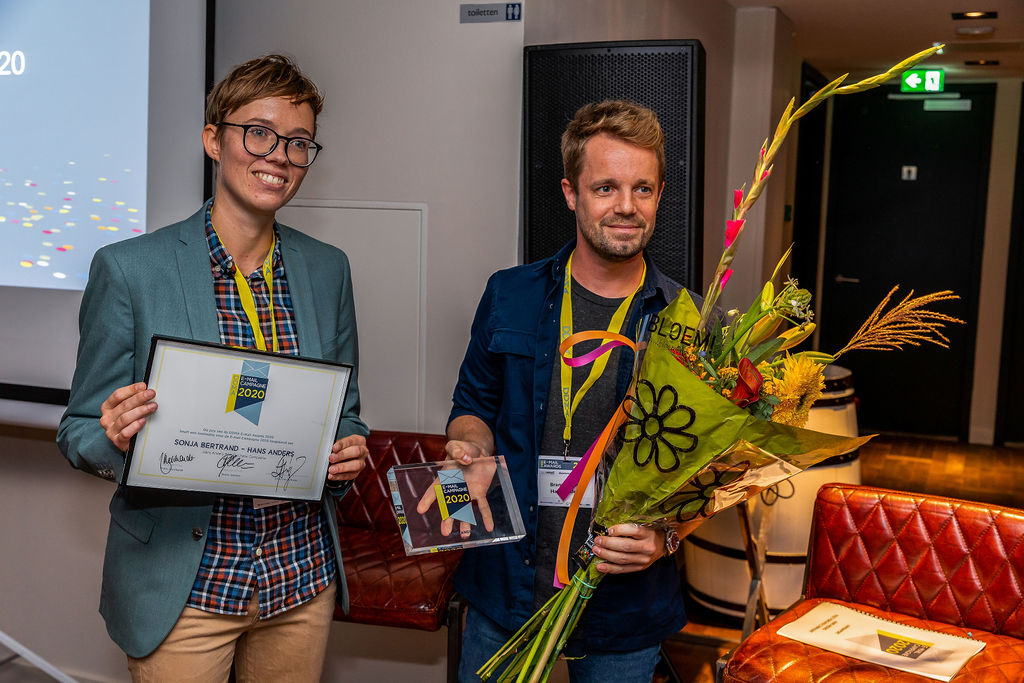How Hans Anders achieves greater brand engagement through their post-purchase campaign
Case study
In a highly competitive market with products boasting long life cycles, positive brand experience holds tremendous significance. A favorable brand experience directly contributes to brand loyalty, which, in turn, fuels repeat purchases (retention). This holds true for the eyewear industry as well. Hans Anders‘ brand essence is encapsulated in the tagline: ‘That’s what makes Hans Anders.’ To accentuate this brand essence, Hans Anders developed the Post Purchase Campaign (PPC): a surprising and relevant email flow. 100procent was enlisted to brainstorm and implement this initiative.
At the outset, there was already a well-thought-out creative concept. We collaborated with Hans Anders to evolve this concept into a hyper-personalized email campaign. The personalization was executed based on insights for which complex queries were crafted from multiple data sources. This not only resulted in a highly successful PPC but also laid the foundation for various other personalized digital touchpoints necessary when the coronavirus emerged in Europe.
The PPC also secured the DDMA Award for Best Email Campaign in 2020, partly due to its innovative approach in the industry. We reflect on a fruitful collaboration and take pride in the outcomes and the DDMA Award.

The reason
Hans has always stood out by offering the best service at the best price. This is communicated by in-store staff during personal interactions when a customer purchases or picks up a new pair of glasses. However, how can this sentiment be conveyed during the one to two weeks when the customer is waiting for their new glasses? What does a Post Purchase Campaign (PPC) need to fulfill in order to enhance brand loyalty?
The goal
A positive brand experience, translating into a higher NPS and, consequently, a higher retention rate.
Objectives:
- Email KPIs: Achieve an Open Rate and Click-Through Rate (CTO) at least on par with the DDMA benchmark.
- Increase NPS. Enhance brand engagement.
- Reduce unnecessary calls to customer service.
Succesful approach
Exceeding Customer Expectations Through Personalized Communication:
- Relevant Content
- Timely Delivery
- Engaging Design
- Appropriate Language and Tone of Voice
Results After the First 6 Months Live
- COR: 75%; CTR: 30%; and CTO: 40% → significantly higher than anticipated.
- NPS: +19% Foundation framework for other campaigns.
- Hans Anders demonstrated agility during the pandemic.

Description of the case
How can Hans Anders provide customers who have just ordered glasses with a positive experience while they wait? And how can we enhance brand engagement through personalized email communication? This is where the Post Purchase Campaign (PPC) comes in.
As a result:
- Bringing the personal touch experienced in-store into the realm of email.
- Truly surprising the recipient.
- Linking informative emails to a positive brand experience: that’s what makes Hans Anders.
The PPC automatically kicks in when a customer orders glasses in a Hans Anders store or through the webshop. A series of emails are designed to convey as personalized and relevant information as possible.
Hyper-personalization: The Key to Success
The Post Purchase Campaign places data and personalization at its core: to send the right email to the right customer at the right moment, and to make the emails themselves more personalized. Is it a new or returning customer? Did the customer purchase one or multiple glasses? Is the order delivered to their home or picked up in-store? And is it a new purchase or a warranty order? Based on various variables and data points, the copy is tailored to fit the specific scenario of the customer. Additionally, the customer sees the glasses they ordered in a funny animated visual, complete with freckles for the younger customers.
Development and Testing of the Data Model
To construct the Post Purchase Campaign, it was necessary to utilize various data sources. A complex data model with diverse queries was built to handle the immense amount of data in personalizations. With such a complex data model, thorough testing is crucial.
Key objectives of this campaign were to evoke a positive feeling in the customer and increase engagement. Incorrect personalization could lead to significant missteps, such as directing the recipient to a store that is not in their vicinity.
All scenarios had to be meticulously thought out, including:
- What happens if a Belgian customer purchases new glasses in the Netherlands?
- What happens if a customer orders two glasses and only one is delayed?
- How does the webshop flow differ from the in-store flow?
In this PPC, all possible outcomes were considered. This was the key to the campaign’s success.
The learnings
The following tips are crucial when setting up a similar campaign:
Do not underestimate the complexity of data. The more data you have, the more relevant and personalized your communication can be. The data model often becomes much more complex during the process, and this always takes more time than anticipated.
Understand your customer journeys. Look not only at the ‘happy flow’ but also explore other possibilities. There are many exception scenarios to consider, and you need to test everything accordingly.
Ensure a flexible setup for your campaigns. As we’ve experienced in the past year, the world around us can change rapidly. Make sure you can easily adjust the copy, timing, and selections of your communication.
Implement an effective feedback loop. Involve all stakeholders and use feedback to optimize your campaign.
If you have questions or want to learn more about how to set up a successful campaign, contact our marketing automation specialists.